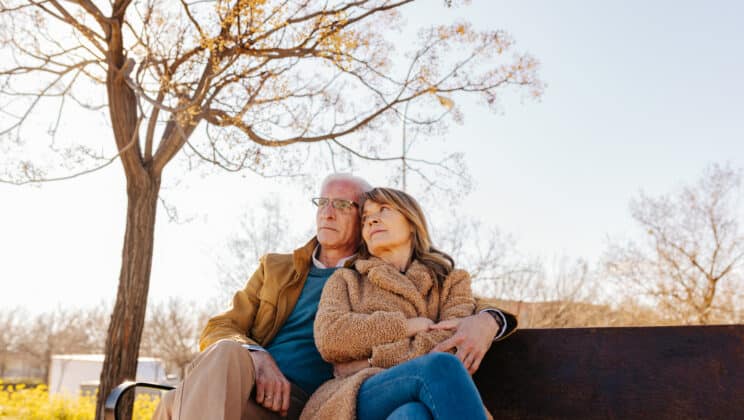The Evolving Possibilities of Manhood
February 22, 2019
The new year has been tough for me. I’m experiencing a lot of firsts – I’m going to be a first-time dad, my wife and I just purchased our first home, and we also opened our first private practice. From the outside looking in, it’s all very exciting – and I do feel excited. But I also feel stressed and terrified.
As a guy, unpleasant emotions are my burden to bear alone and in silence. Right? Where do I turn to express my feelings of vulnerability and pain? I have a justifiable excuse for not confiding in every friend and family member: they won’t think I’m man enough. This deep-rooted core belief transcends my identity as a psychologist who specializes in working with men and masculinities.
So, when the APA Guidelines for the Psychological Practice with Boys and Men was first published, I had conflicting emotions. On one hand, I was proud to be a member of the APA’s Society for the Psychological Study of Men and Masculinities, who created the guidelines. The authors worked for more than 10 years, refining a product that the psychologist in me truly believes can be useful in helping boys and men deal more effectively with painful thoughts, feelings, and sensations. But my manly inner critic? He’s pissed.
Confronting the elephant in the guidelines
The guidelines were developed based on mounting research showing that men suffer when they attempt to conform to restrictive and rigid definitions of masculinity. These definitions highlight supposedly “essential” traits such as anti-femininity, aggression, over-reliance on independence, risk-taking, emotional stoicism, physical strength, and dominance over others. The guidelines refer to these attitudes and behaviors as traditional masculine ideology and provide clinicians with ways to help men explore more flexible patterns of behaviors, in order to develop more meaningful relationships with themselves and others.
However, some in the media have criticized the guidelines for attacking men who have these traditional values. And just like those pundits, my manly inner critic argues that by promoting the guidelines, I’m attacking my own manhood, denying my biological traits, and shaming other men. So let’s address these controversial elephants.
I’m attacking manhood
My intent is not to attack any man for ascribing to qualities that give his life meaning and value, but rather to open some men up to new and flexible patterns of behavior. In a recent blog post, I describe how research shows that attempting to restrict emotional expression for the sake of conforming to traditional masculine ideology can lead to depression; anxiety; substance use; suicidal ideation and attempts; aggression, including intimate partner violence; criminality; and physical health issues.
I’m not saying that all aspects of stereotypical masculine behaviors are bad. Only that there are some traditional forms of masculinity that can be harmful in some circumstances.
I’m denying my biological traits
One of the most prominent criticisms of the guidelines is that they’re attempting to suppress men’s natural tendency toward roughhousing and adaptive aggression (i.e., assertiveness). This argument cites research linking testosterone to aggression. However, there is also research indicating that this relationship is somewhat conflated and ignores many other variables. Regardless, to say we are the product of our biology, and leave it at that, leaves little room for changing behavior in meaningful ways. Men tend to have higher levels of hormones that increase the risk for aggressive behaviors, but does that mean we are predetermined to be aggressive?
I’m shaming the men around me
I hope not. Ridiculing men is antithetical to everything the guidelines stand for, and I continually check in with myself to make sure I uphold their principles. My goal is to empower men to move beyond strict definitions of masculinity so that they can express themselves in ways that are more authentic, emotionally open, and psychologically flexible. It’s not about encouraging shame, but encouraging growth.
Putting the guidelines to work when working with men and boys
Let’s look at what discussing the impact of masculinity with our clients might look like in the therapy room. Rather than summarizing every guideline, I’ll paint a picture of their utilization within clinical practice.
The Intake
Let’s say you have an intake with a man complaining of stress. Typically, it’s a good idea to account for diversity variables as part of the overall conceptualization. I was taught the ADDRESSING model (Hayes, 2001), which stands for Age, Disability status, Religion, Ethnicity, Socioeconomic status, Sexual Orientation, Indigenous heritage, Nationality, and Gender.
But how often do we remember to consider gender in this complex interweaving? If you’re like me, you probably didn’t even think to ask about the impact of masculine identity on the presenting problem. But the guidelines put masculinity front and center. There are several open-ended questions we can ask to find out the impact gender has on our client:
- How do you identify your gender?
- What does being a man mean to you?
- How do you think being a man impacts your stress?
- What kinds of pressure do you experience from society because you are a man?
- In what ways does being a man influence your relationships with others?
- How does identifying as a man impact other identified important areas of diversity?
The guidelines provide a list of assessment measures to help guide the impact of masculinity on clinical presentation. The point here is to notice the tendency to brush past male identity as inconsequential to our case conceptualizations and begin to make a subtle shift.
Diagnosis
The other important goal in some intake sessions is diagnostic clarification. Men with anxiety and depression tend to fly under the diagnostic radar when they ascribe to rigid forms of masculinity. We mental health professionals can miss the subtle signs that act as diagnostic criteria because we get stuck in our own limited ideas of what certain mental health disorders look and sound like. So, when providing a psychodiagnostic assessment, be on the lookout for:
- More psychophysiological and somatic symptoms
- Anger, irritability, frustration, intolerance
- Poor sleep and concentration
- Social isolation/withdraw
- Increased use of alcohol
Of course, this will not be true for all men, but it could apply to those who appear to struggle with emotional expression. These symptoms are not diagnostic of any one mental health disorder, so further evaluation will be important to identify indicators specific to each disorder.
Session-by-session
Perhaps masculinity doesn’t matter to the client, and it doesn’t impact them in any way. That’s OK, too. We’re not here to assume masculinity must or must not impact the client. But it’s worth inquiring and remaining curious.
Let’s say it turns out masculinity impacts the client in many ways. He admits he feels like “less of a man” or he is unwilling to engage in emotional exposure-related interventions for fear of appearing weak and vulnerable. In this case, jumping too quickly into emotion-laden interventions may do more harm than good.
To use a broad case example, I recently started working with first responders who encounter horrific and life-threatening events on a daily basis. Many of these men present with trauma-related symptoms, including hyperarousal, intrusive memories, sleep disturbance, flashbacks, emotional numbing, and disconnection from others. Behaviorally, I often hear they do not open up to their loved ones, they cope with thoughts by using substances, they snap easily, and they avoid emotional conversations. Some even avoid physical intimacy.
The guidelines offer helpful and empirically supported methods of providing effective intervention for men who are averse to emotional expression. For example, storytelling and humor can be a great starting point. Some men may also be more comfortable with behavioral goals.
In my practice, I tend to bake small emotional-exposure exercises into behavioral goals. For example, I often challenge men to spend 10 extra seconds hugging their loved ones; tell their partner “I love you” more often; initiate conversations with friends; or go to a crowded area. I also try to use behavioral-based metaphors relevant to their jobs. For example, I might invite a firefighter to walk toward his unpleasant experiences the same way he might walk toward a burning building.
These activities allow men to explore behaviors outside the confines of their masculine identity and, inevitably, lead to making contact with some kind of feeling. The therapist can probe this feeling a bit by simply asking, “So how did it go when you hugged your kid for that extra 10 seconds?” How the client responds could provide an avenue for further exposure-related exercises, including a willingness to explore thoughts, feelings, and body sensations.
These strategies are not a panacea for all men struggling with mental health issues, even those who ascribe to restrictive forms of masculinity. These are general suggestions to be applied as part of a more tailored treatment plan encompassing the nuances and subtleties that exist for each individual.
Expanding, not eliminating, masculinities
By working with the guidelines, we’re not trying to eliminate masculine identities. Instead, we want to build on positive aspects of masculinity – strength, courage, heroism, loyalty, self-reliance, goal-orientation, fatherhood.
To return to our first responder example, we might start noticing subtle but important shifts in daily behaviors. Rather than isolating and remaining silent about their work life, the men start to open up to their loved ones about their tragic days. After a while, they might start hugging and kissing their children more often or for longer periods of time; share their experiences with male friends; initiate dialogues with strangers; replace alcohol with yoga; and cry rather than shout.
Our goal is to provide avenues for flexible patterns of behavior, less dictated by rigid rules like “real men don’t hug one another,” and more guided by meaning and purpose. This means asking men if they are willing to try out new types of behaviors – even when it makes them feel awkward or strange – for the sake of healthier, happier relationships. From this perspective, I believe our job as health professionals is to support the evolution of the definition of what it means to be a man.
CONTACT US
If you want additional support, Lyra can connect you to a behavioral health solution that is right for your needs. You can get started today if Lyra is offered by your employer. Sign up now.
And check in frequently here or follow us on Facebook, LinkedIn, and Twitter for more insights into optimal well-being.
DISCLAIMER
The content of this blog is not intended to be a substitute for professional medical advice, diagnosis, or treatment.
ABOUT THE AUTHOR
Zachary Isoma, Psy.D. is a clinical psychologist and co-owner of Harbor Psychology, serving the Greater Tampa Bay area. He specializes in practicing acceptance and commitment therapy (ACT) with men who struggle with anxiety and have difficulties expressing their thoughts and feelings. He is the founder of the Tampa Bay ACT peer consultation group and provides trainings, workshops, and seminars on ACT to students and professionals.
Author
The Lyra Team
The Lyra Team is made up of clinicians, writers, and experts who are passionate about mental health and workplace well-being. With backgrounds in clinical psychology, journalism, content strategy, and product marketing, we create research-backed content to help individuals and organizations improve workforce mental health.
Explore additional blogs

Mental health tips
How Radical Acceptance Can Decrease Your Stress

Mental health tips
Empty Nest Syndrome: Missing Them, Finding You

Mental health tips